On June 30th, 1953 the first production Corvette rolled off the assembly line.
And after building its performance pedigree in the 1960s, the long-running C3 Corvette endured the gas shortages, emissions tightening, and evolving safety regulations of the 1970s better than most of its contemporaries—but as the 1980s dawned, change was in the air.
Starting with a clean sheet of drafting paper, a fresh cast of engineers and designers would take the C4 in a bold, new direction.
This article is part of an expanding series on the history of the Corvette. You can see all the stories we have so far here:
- A Look Back at the History of the Corvette C1 (1953-62) Generation
- A Look Back at the History of the Corvette C2 (1963-67) Sting Ray Generation
- A Look Back at the History of the Corvette C3 (1968-82) Stingray Generation
- A Look Back at the History of the Corvette C4 (1984-96) Generation
- A Look Back at the History of the Corvette C5 (1997-2004) Generation

Corvette Fans, Meet the New Boss (Same as the Old Boss)
In the mid-1970s, the Chief Engineer responsible for many of the Corvette’s performance credentials, Zora Arkus-Dutov, retired per GM’s corporate age cap policy. His replacement was Dave McLellan. While the personnel change initially gave some gearheads pause, they soon realized the Corvette was in (VERY) good hands.
McLellan took a clean sheet approach to the Corvette, and used many advanced construction and design techniques in its development. The Corvette was no longer a simple body-on-frame car, and instead used a perimeter frame for rigidity with body panels secured as non-structural elements. It also featured several body parts made from molded plastic instead of the traditional fiberglass found on earlier Corvettes.
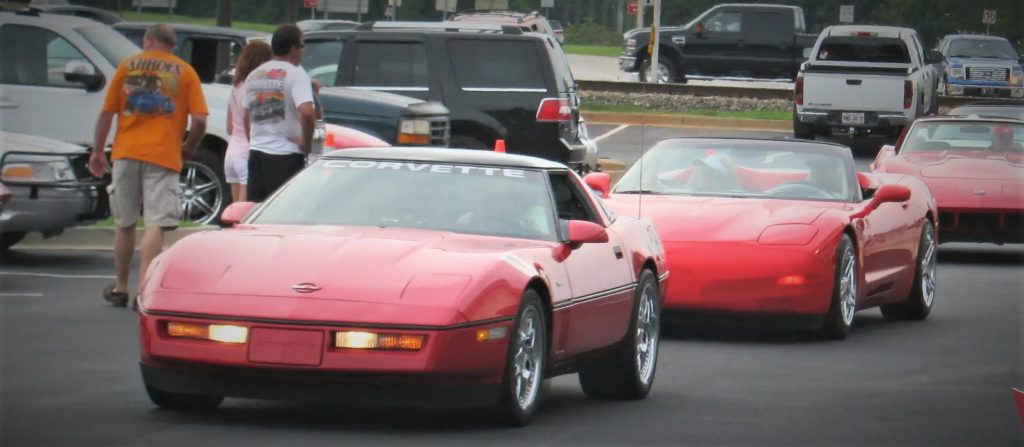
With emissions-era engine tech still in its infancy, McLellan placed more emphasis on handling. The C4 featured reworked suspension bits and an entirely new chassis design. Lightweight brakes helped the Corvette remain sure-footed at ever-increasing speeds.
And just like Duntov, McLellan kept his finger on the pulse of the motorsports community too, working closely with racers and builders to continually refine and improve the Corvette through the C4 generation. (He was also an integral part in a certain special edition “King of the Hill” Corvette that we’ll get to later in this article…)
In other words, McLellan knew exactly what the Corvette needed to evolve past the 1970s and into the modern, fuel-injected world.
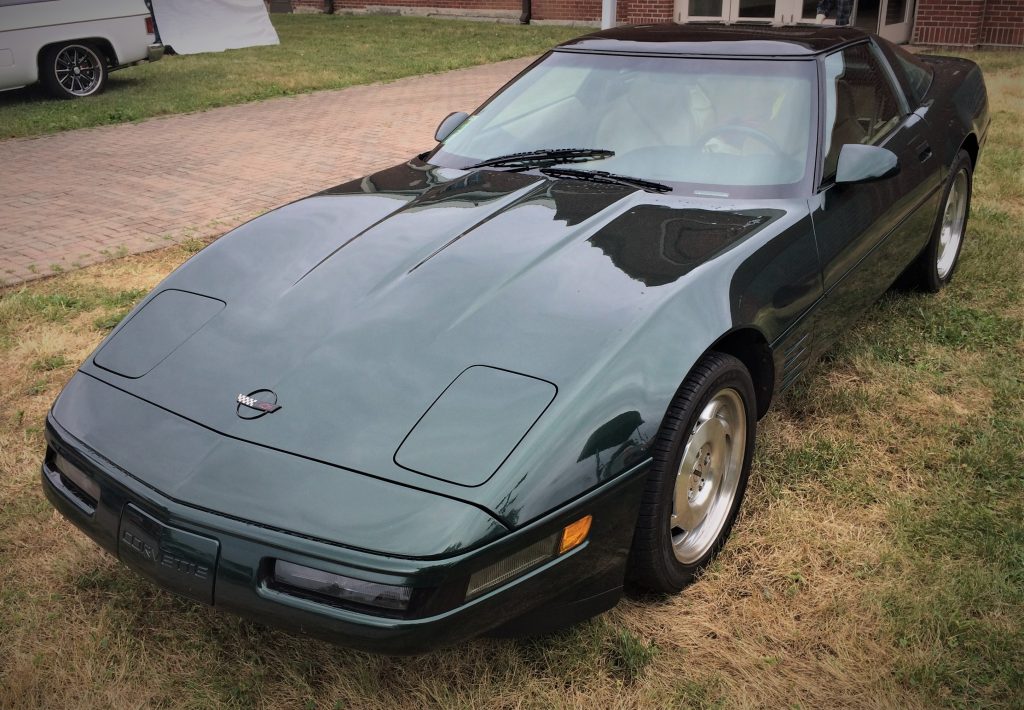
C4 Corvette Design & Evolution
When the C4 Corvette debuted in 1984 with its restrained, linear profile, it was immediately clear that the car was a significant departure from the bulging fenders and Coke-bottle styling of the C3 generation. Yet there were plenty of throwback design elements included too; side fender louvers, round taillights, and hidden headlights were all conspicuous nods to earlier Corvettes.
And after speculations of mid-engine layouts, turbocharging efforts, and even Wankel(!) powerplants, the new Corvette emerged as a rear-wheel drive sports car with an independent rear suspension and a naturally aspirated Chevy small block V8 under the hood—a familiar Corvette recipe since 1963.

Behind that SBC V8 was either the then-new 700R4 four-speed automatic or a “4+3” speed manual transmission developed by Doug Nash. The Nash design was essentially a four speed manual coupled to an overdrive that could be engaged in the upper three gears—though a novel idea for the Corvette, similar setups had been used successfully on import cars through the 1970s.
The selectable overdrive was seen as a way to give the Corvette’s thirsty V8 slightly better fuel economy. (Poke around the Corvette enthusiast community and you’ll hear mixed reviews about the Nash 4+3 transmission.)
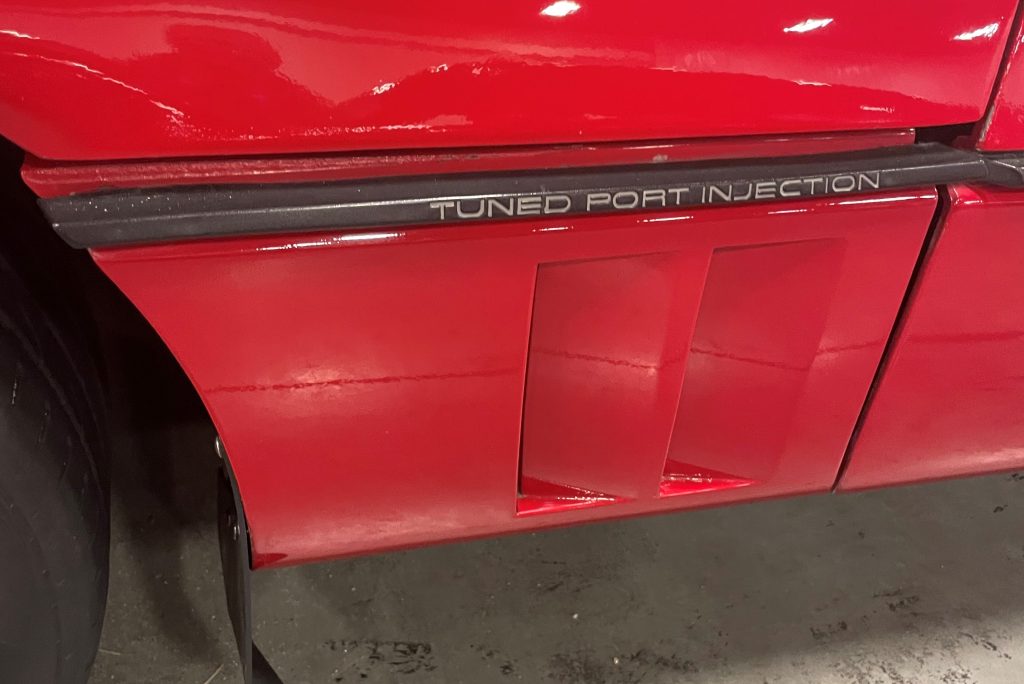
Folks who hopped inside the new Corvette were greeted by a space-age digital display that featured a mix of icons, graphs, and alphanumeric readouts.
And while buyers were dismayed with no convertible option in 1984, the consolation prize was a clever removable roof panel that gave drivers an open-air experience without many of the drawbacks of a traditional soft top. Though it’s commonly called a Targa Top by enthusiasts, that name is a Porsche trademark and as such, GM literature officially refers to it as simply a removable roof panel.
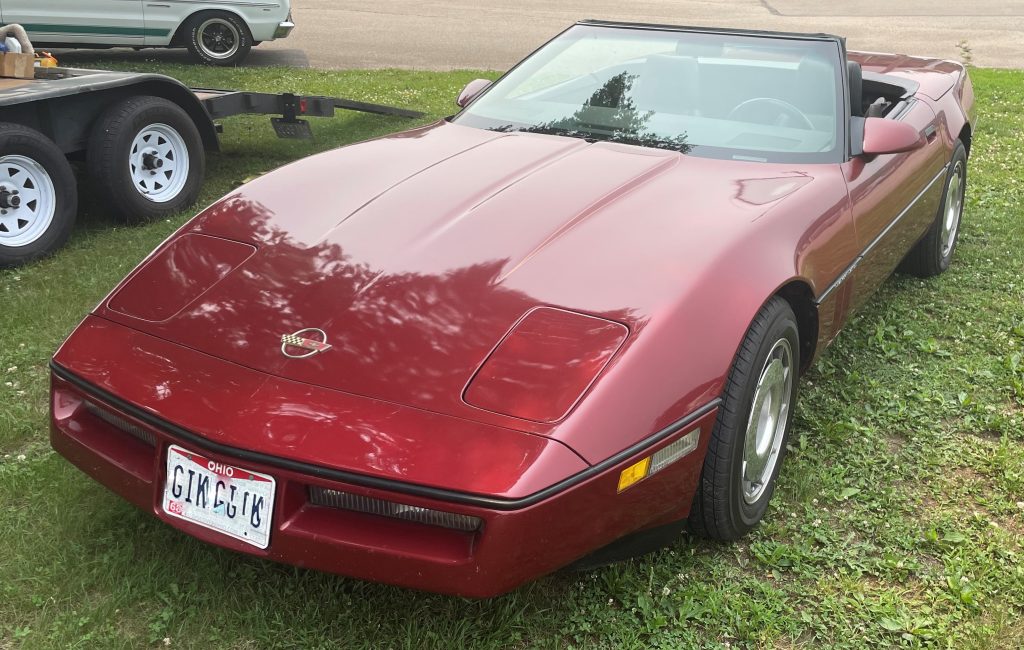
After its debut in 1984, the C4 Corvette got its first major exterior evolution in 1986 with the addition of the convertible top.
As expected, the news was eagerly welcomed by Corvette fans because, after the soft top option was killed off in 1975, many gearheads wondered if we’d seen the last Corvette convertible. The C4 put those fears to rest.
It should also be mentioned that, thanks to new safety regulations, both the convertible and coupe got the requisite third brake light in 1986 as well.
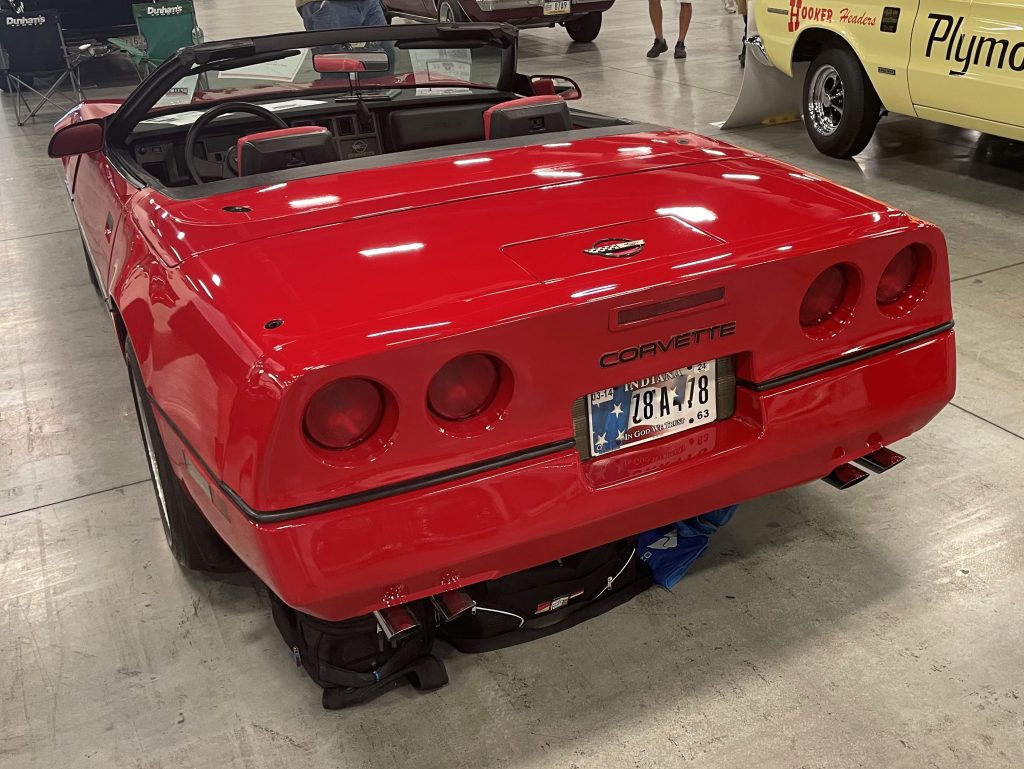
Then in 1990, a certain special edition Corvette (relax, we’ll talk about it here in a sec…) ushered-in an updated rear end treatment that could accommodate a wider tire package. With contemporary square(ish) taillights and a convex rear bumper panel, the rear styling was mimicked on all C4 Corvettes from 1991 on up.
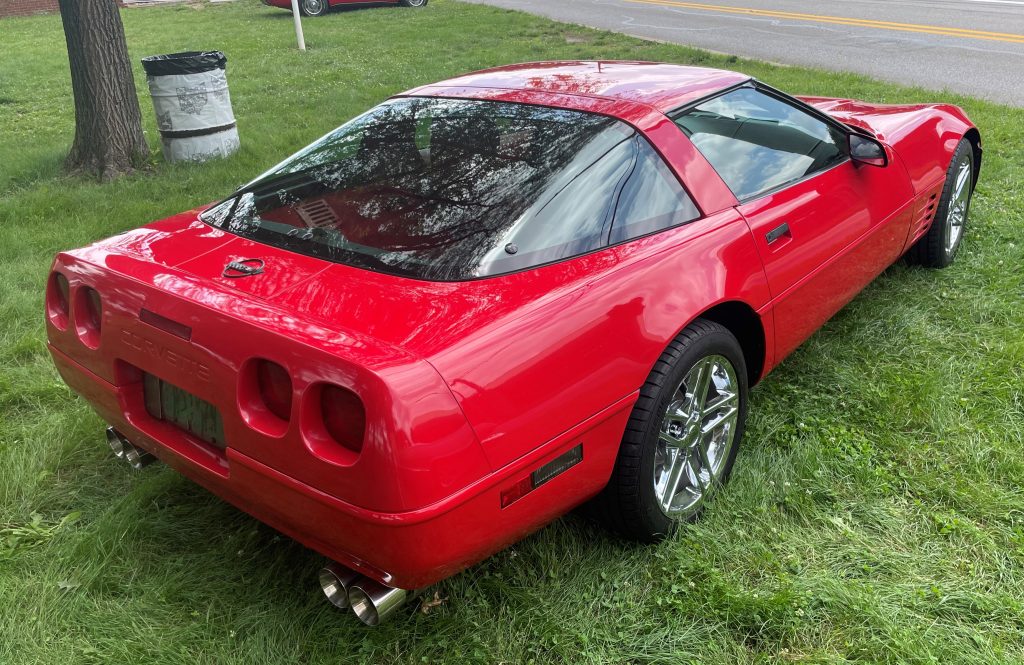
At the same time, the Corvette got a front-end tweak too. While the first C4 nose was derivative of the one found on the last C3s of the early 1980s, in 1991 it got smoothed out with a slick pair of wraparound indicator lights. That striking visual element carried on through the end of the C4 in 1996.
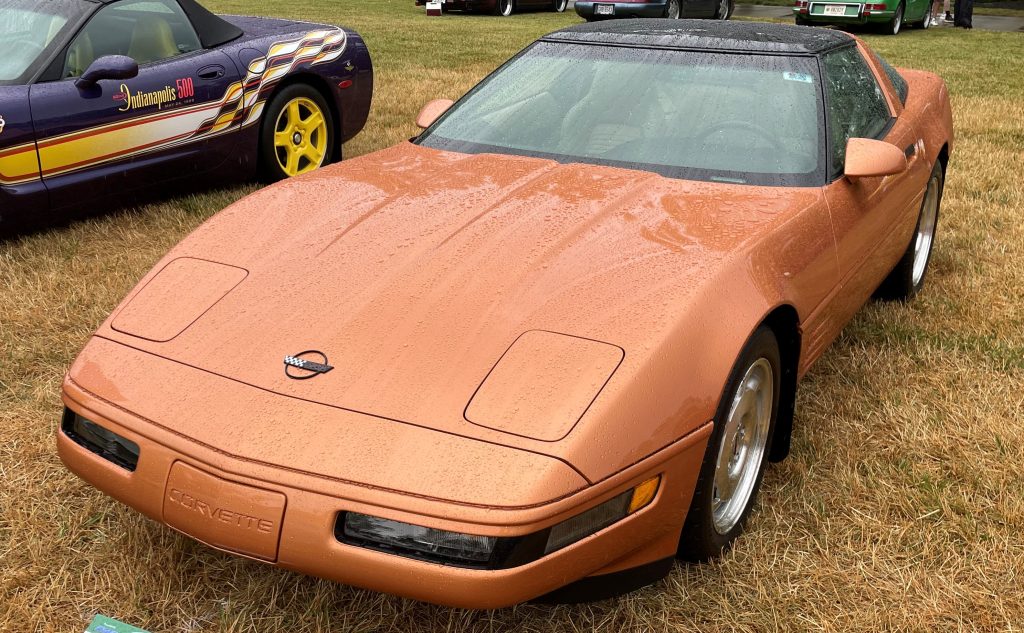
Now, let’s talk about that fancy digital dash for a second.
After its launch in 1984, the digital cluster went through a series of updates as it evolved in the late 1980s. Both the display layout and the ECU logic that controlled it changed to offer improved reliability, accuracy, and durability.
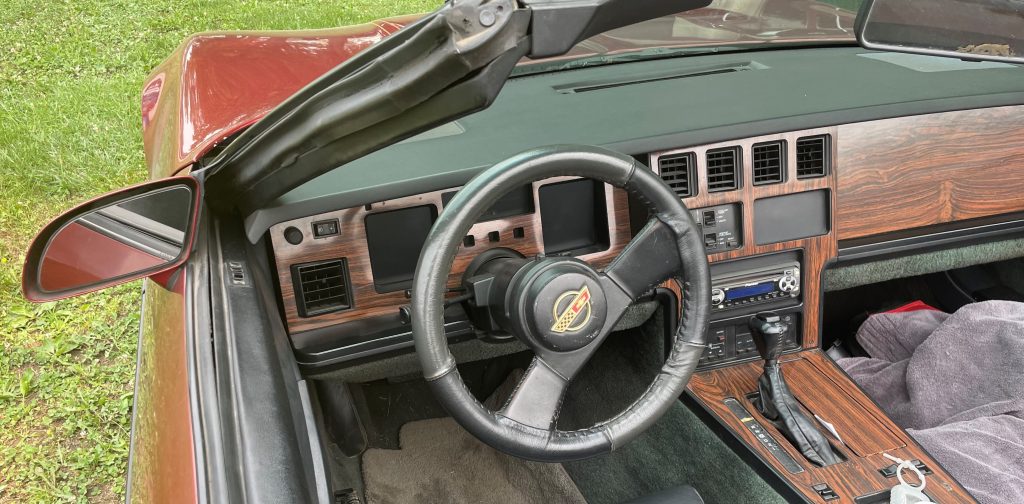
Yet in 1990 the digital dash was gone, replaced by a handsome complement of analog dials. Because of this, many Corvette aficionados see the 1990 Corvette as somewhat of an anachronism, as it carries the more modern interior of the later C4s, yet wears the exterior of the early models.
Later in the C4 production run, the interior was updated again in 1994—but after that, much of the Corvette team’s focus had shifted to the nascent C5 generation set to debut in 1997. The C4 Corvette’s final years were buoyed by special edition models, which we’ll talk about in detail momentarily.
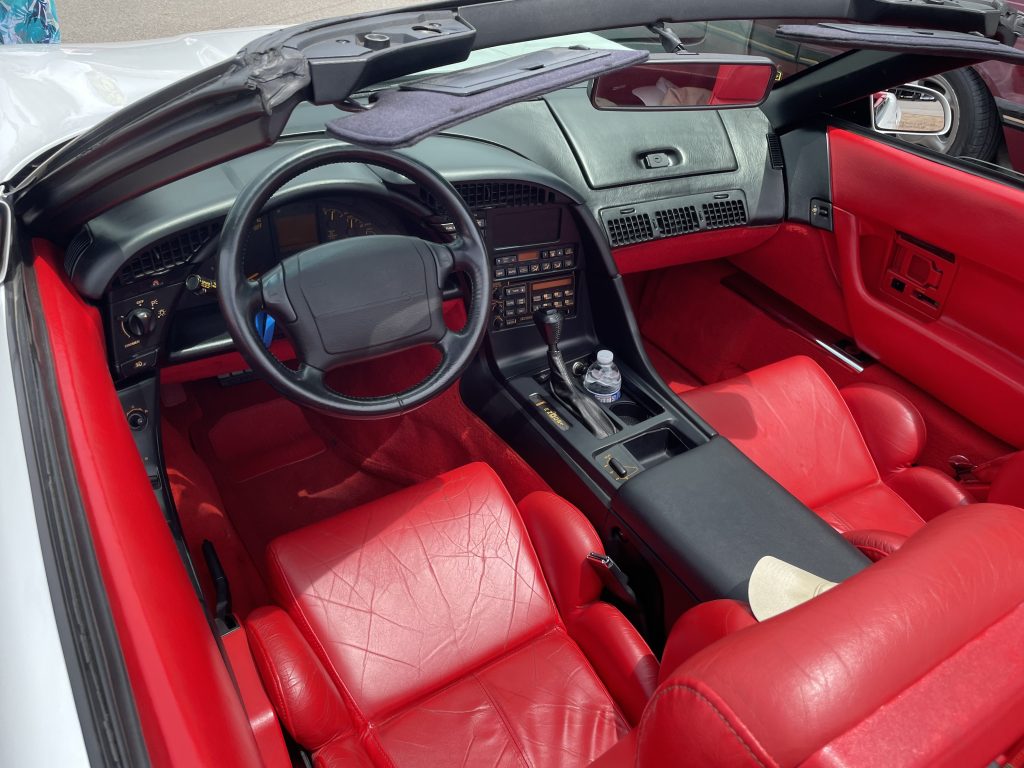
One final note on a specific C4 styling element: the wheels.
Throughout its production run, the Corvette wore special wheels with integrated turbine fins designed, on paper at least, to cool the brakes. Depending on the year, these directional wheels earned the nicknames Turbines, Salad Shooters, Razors, and Sawblades as they continually evolved throughout the C4’s lifespan.
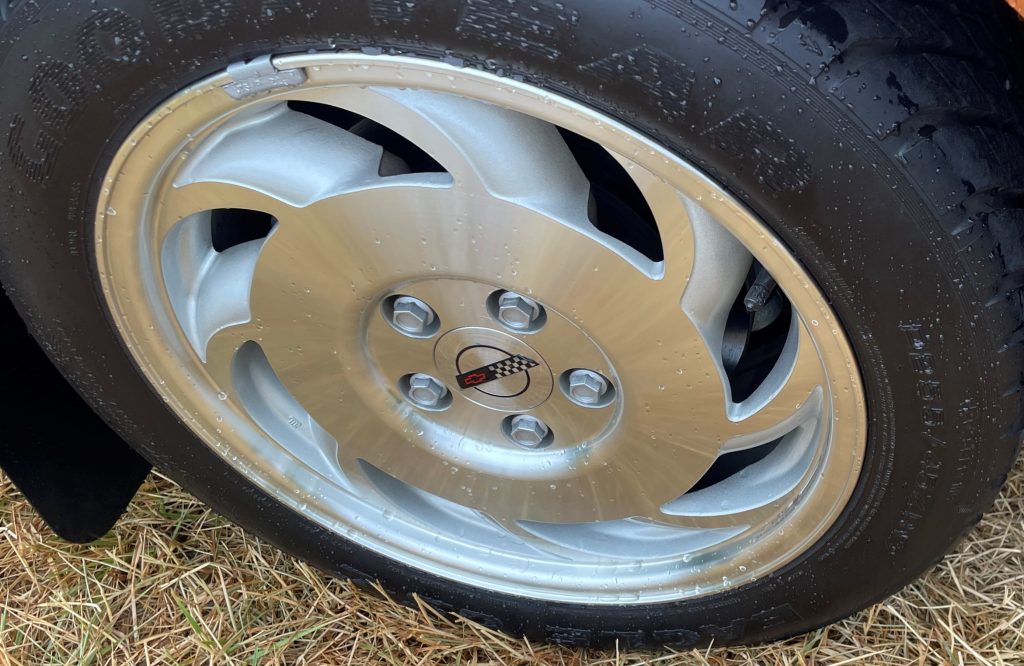
As you’d imagine, these wheels are directional, which meant you couldn’t simply rotate the tires like a car with typical wheels. Still today, the debate rages on as to whether these wheels did offer any significant cooling improvement over a traditional spoke design.
C4 Corvette Engine Options & Performance
Despite its radical new look, the C4 Corvette launched with a familiar powerplant under the hood: the Cross-Fire Injection 350ci L83 V8.

The L83 debuted for the C3’s swan song in 1982 and came back mostly unchanged for the C4’s inaugural year. The engine itself was the result of increasing emissions and efficiency demands of the 1970s and used a unique EFI system that featured a pair of TBI units atop the split manifold.
While the L83 did offer better efficiency and performance over the Corvette V8s from the mid 1970s, in 1984 its 205 horsepower wasn’t the lofty number that Corvette fans hoped for in the new C4.

But C4 Corvette performance took a big leap forward with the 350ci L98 engine introduced in 1985.
The L98 would soon imprint the words “Tuned Port Injection” into the minds of gearheads everywhere, as the engine’s new, modern EFI system offered an improvement in power, efficiency, and reliability over the outgoing Cross-Fire L83.
With the new TPI L98 under its hood, the 1985 Corvette made 230 horsepower, and its output slowly inched up over its production run. 1991 was the L98’s last appearance in a Corvette, where it made 250 hp.
Speaking of drivetrain, remember that clever Doug Nash 4+3 manual/auto transmission? It was replaced by a more traditional ZF six-speed manual in 1989. As for the automatic option, the trusty 700R4 was rechristened the 4L60 in 1990 and got electronic control (now called the 4L60-E) in 1994.

C4 performance really hit its stride in 1992, when GM unleashed the final evolution of the venerable Small Block Chevy, the LT1. Borrowing the “LT-1” designation originally used during the C3 generation, the LT1 was the culmination of everything Chevy had learned about its trusty Mouse motor.
Siblings inside the LT1 family of engines wound up in a lot of places, including the Camaro/Firebird twins, GM’s full-size sedans and wagons, and even the Cadillac Fleetwood. But the LT1 engine in the Corvette was distinct, featuring aluminum heads and four-bolt mains, and making an impressive 300 horsepower.
The 350ci LT1 would carry the C4 through the rest of its production run, setting the stage for the vaunted LS engine series arriving when the C5 hit the scene in 1997.
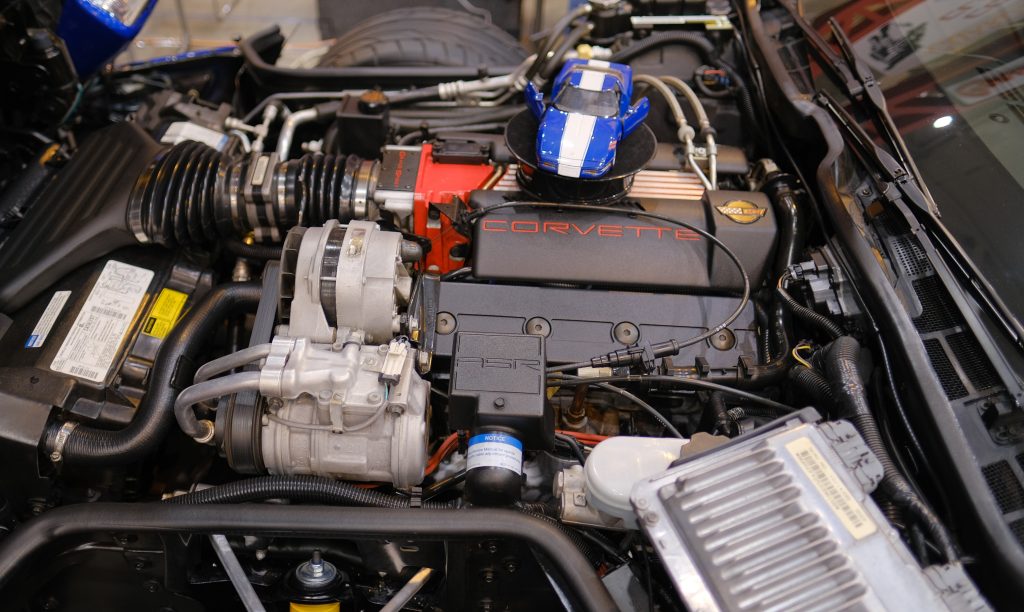
Then in the C4’s final year, 1996, Chevy gave us a new high performance variant of the LT1, the optional LT4. Thanks to a more aggressive cam profile, better flowing heads, and other upgraded engine internals, the LT4 made 330 horsepower. For the Corvette, it was a one-year-only option, available exclusively in Corvettes with the six-speed manual transmission. (The sole engine available for the automatics was the aforementioned LT1.)
Look, we know you’re waiting for us to talk about a certain special Corvette and its OHC “LT5” engine…but we’re not there yet…keep reading.
Noteworthy C4 Corvette Special Editions

As had been the case with the C2 and C3 generations, the C4 Corvette had a handful of special editions that were particularly memorable.
First up is the 1986 Indianapolis 500 Pace Car, which is noteworthy because it helped herald the return of the aforementioned drop-top Corvette.
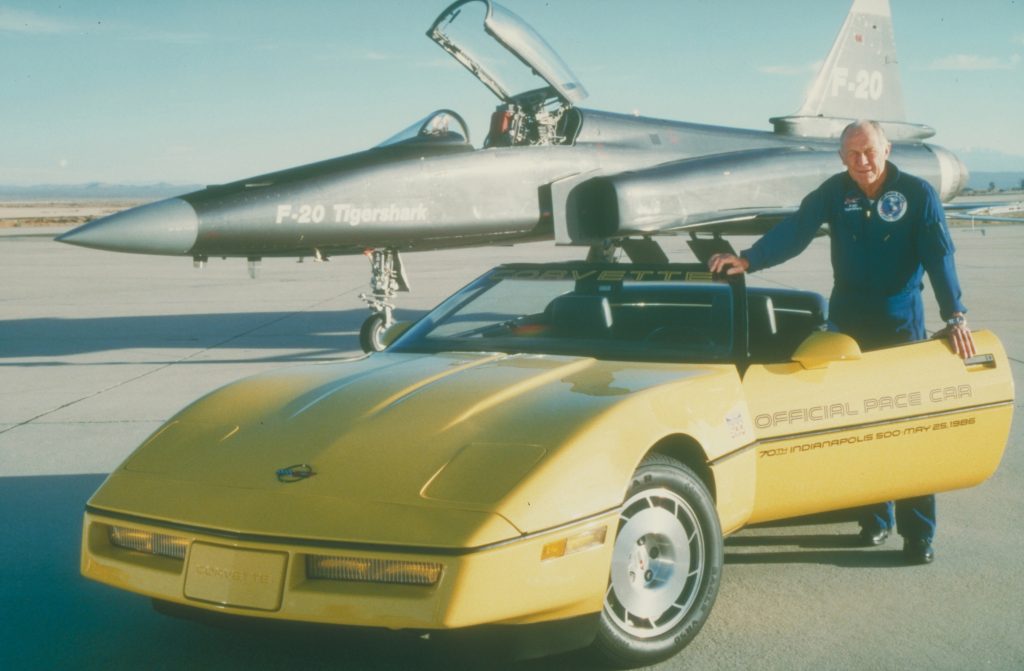
Then less than a decade later, a Corvette was back in the Hoosier State with a 1995 Indy 500 Pace Car and requisite replicas for sale to the public. (Pretty soon after that, the 1998 C5 would make the Corvette a common sight at the Greatest Spectacle in Racing.)
Historically speaking, the Corvette crossed some key milestones during its C4 era and Chevy issued special models to commemorate those events.
First there was a limited edition 35th anniversary Corvette for 1988. It was exclusively offered as a white coupe with a white interior and striking white wheels. Production of the 35th Anniversary model barely tipped over 2,000 units.

Next up was the 1993 40th Anniversary edition, which featured a Ruby Red color scheme paired with special 40th badging and interior appointments. Close to 7,000 of these models were made.
Several high-profile performance shops and tuners got involved with the C4 too.
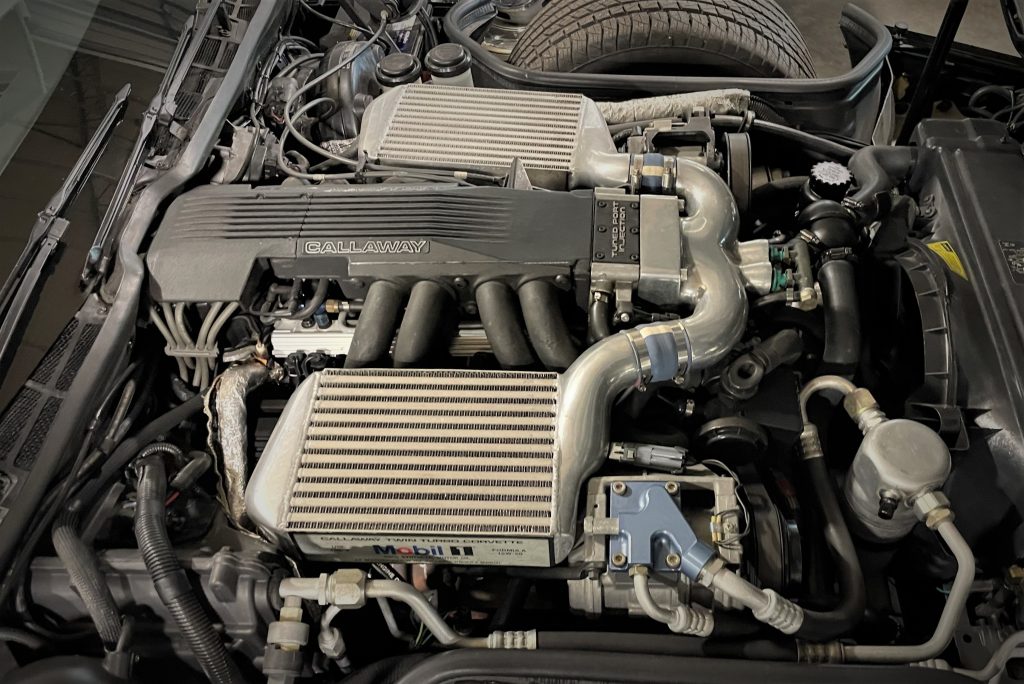
Famously, Reeves Callaway twin-turbocharged a Corvette to the tune of 880+ horsepower. Dubbed the Sledgehammer, the Callaway Corvette danced up to 255 mph, making it the fastest street car on the planet at that time.
Just saying it again: 255. Miles. Per. Hour.

And finally, with news of a new C5 generation waiting in the wings, Chevy decided to send the C4 off with a bang.
Two bangs, actually.
The first was a special “Collector Edition” Corvette that heralded the end of the generation, much like Chevy had done with the last 1982 C3 Corvette CE. Clicking that box on the options sheet got you a silver paint job, along with special Collector Edition emblems and interior embellishments, and a slick set of five-spoke wheels.
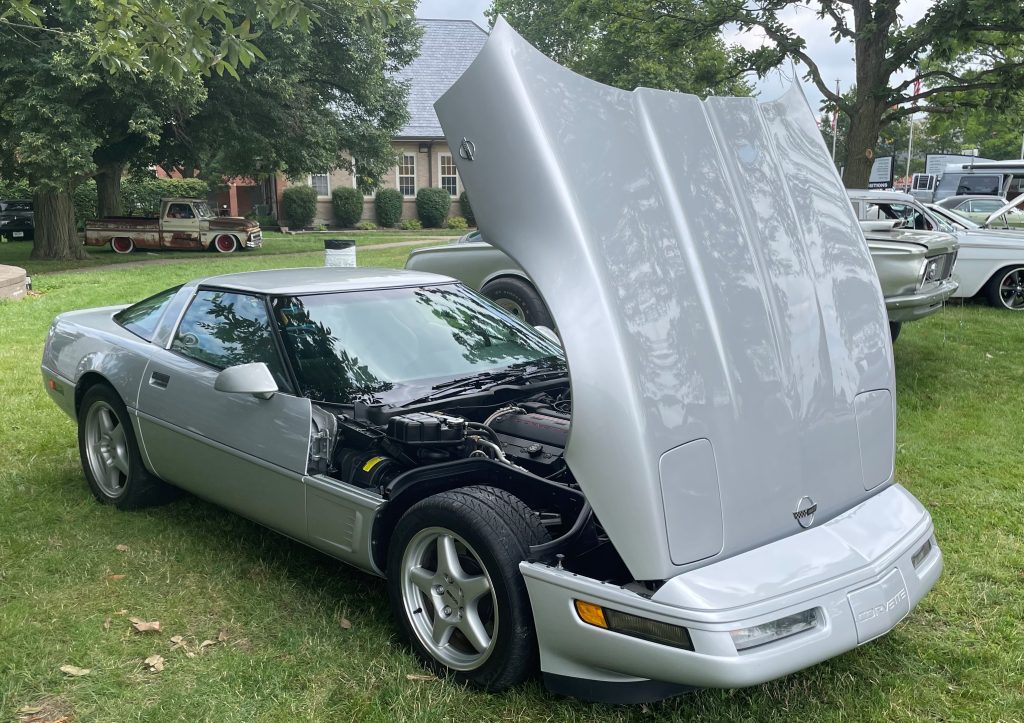
But the 1996 Corvette Grand Sport was truly the end of the C4’s performance legacy. Again pulling a name out of the Corvette’s storied past, the Grand Sport moniker hearkens back to the Duntov-prepped Z06 racers of the 1960s.
Chevy made 1,000 Grand Sport Corvettes in 1996, with a little over 800 being hardtops, and the rest convertibles.
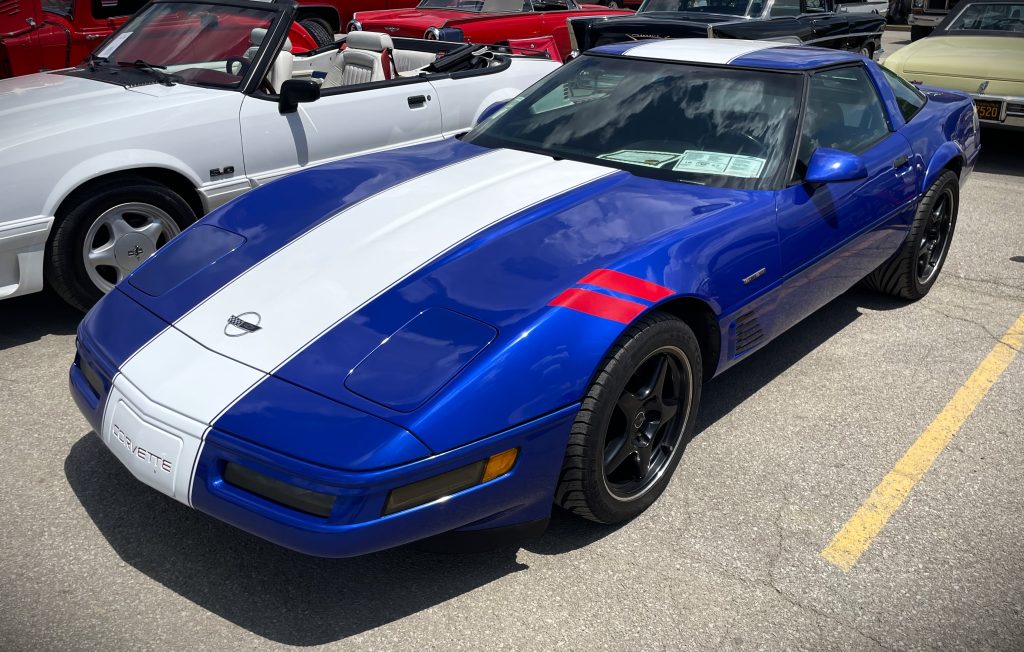
For starters, all Grand Sports came with a manual six speed transmission and the aforementioned LT4 V8 making 330 horsepower.
The Corvettes came with stickier, wider tires too and, if you look closely, you’ll notice the hardtops feature fender flares to accommodate them—interestingly, the convertibles did not get the same treatment.
All Grand Sports wore unique black wheels to offset the signature blue/white paint job.
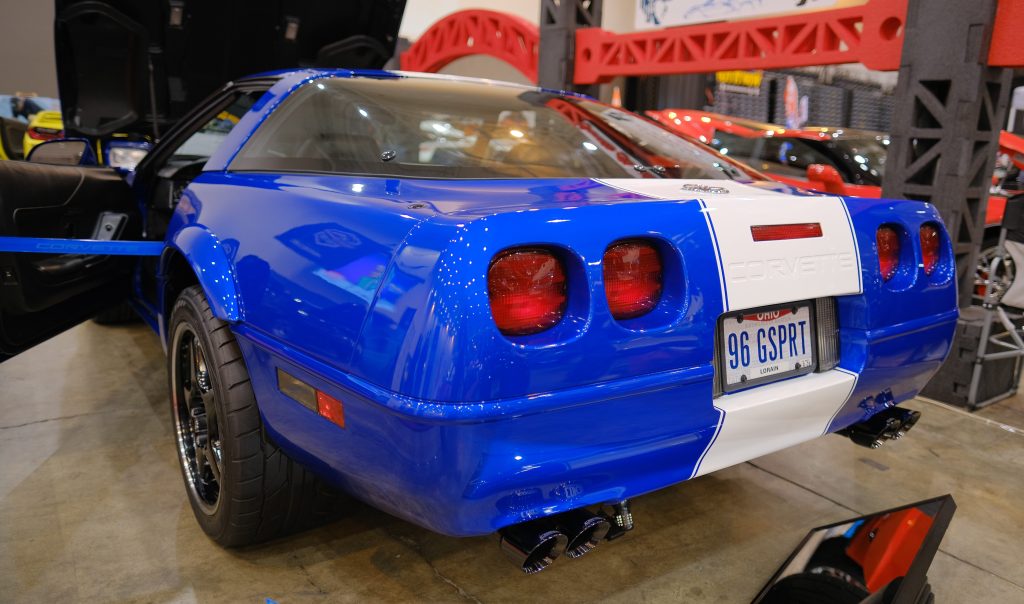
The 1996 Grand Sport models were certainly geared for the track and more competition-minded drivers, and perhaps enticed some buyers who had been waiting for the C5 to come out the following year.
But, when it comes to the no-holds-barred, tire shredding performance, there’s one special C4 production model that stands above the rest…
ZRRRrrrrrr-1111!!one!!one!!!
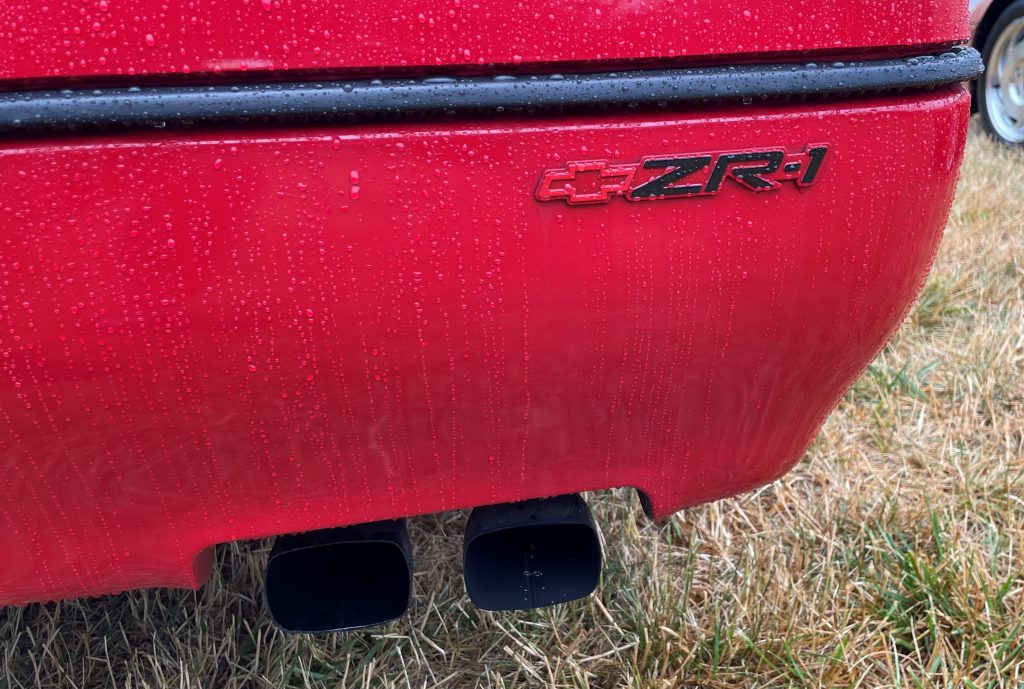
OK, the moment we’ve all been waiting for.
The Corvette heard ’round the world.
The “King of the Hill.”
The mighty, mighty ZR-1.
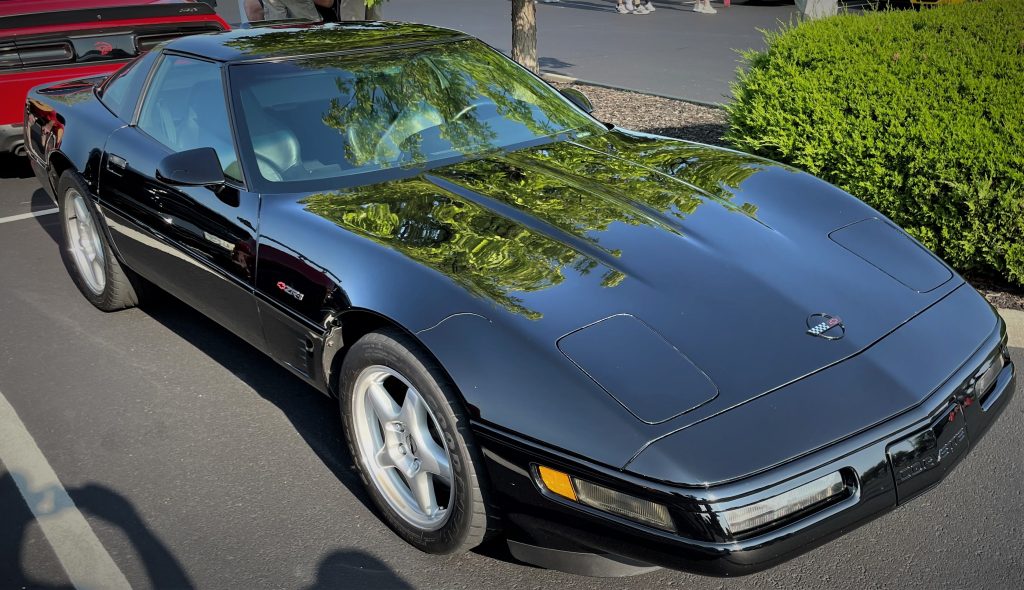
Chevy hadn’t been shy about alluding to some of the European benchmarks it used during the C4 Corvette development, particularly those from Stuttgart and Maranello. And after GM’s acquisition of the Group Lotus performance engineering firm in the mid-1980s, it was ready to put the C4 up against the world’s best street cars.
While the ZR-1 benefits from a host of performance upgrades, including (but not limited to) a revised chassis and suspension, grippier Goodyear tires, new bodywork, and enhanced brakes, the real magic was under the hood.

Dubbed the LT5 in Chevy parlance, the ZR-1’s all-new engine was like nothing seen in a production Corvette before. While the block itself shared some of the basic 350ci SBC architecture, it was essentially an all-new engine.
It began as an all aluminum block, topped with Lotus-designed aluminum heads, yet its dual overhead camshaft configuration was radically different than a traditional pushrod Chevy V8. A revised intake system, forged steel crankshaft, and four valves per cylinder further upped the performance ante.
For the first year of the ZR-1, 1990, the LT5 made 375 horsepower, but by 1995, the final year of the ZR-1, that output had swelled to 405—astonishing numbers for the time.

Under the hood of the ZR-1, the LT5 helped the leaner, meaner Corvette set several speed and endurance records, a testament to not only the car’s performance, but its durability and reliability as well.
Though ZR-1 production only lasted from 1990 to 1995, it has firmly seared itself into Corvette lore and the letters ZR-1 have transcended the gearhead culture to become synonymous with performance all over the world.

The C4 Corvette Legacy
With the C3 Corvette officially reaching “Classic” status, the C4 slips into that weird spot where it’s perhaps too new to be vintage and too old to be modern.
The good news is that also makes C4 Corvettes still relatively affordable. And considering Chevy made about a zillion of them over a 10+ year production run, parts and support are readily available.
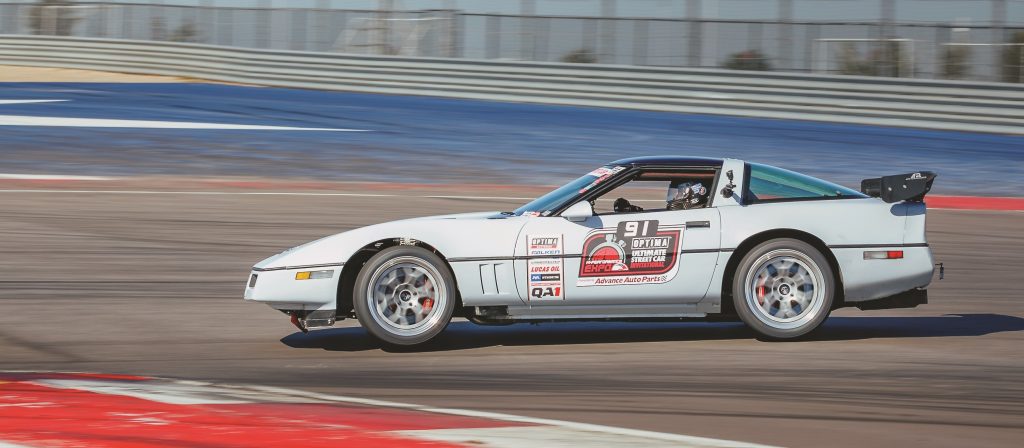
Better still, the car itself is a potent RWD performer, with a time-tested engine under its bonnet. Go to any local autocross event and there’s a good chance you’ll see at least one C4 cutting through the cones.
An it’s always an LS swap away from being a bona fide track monster.
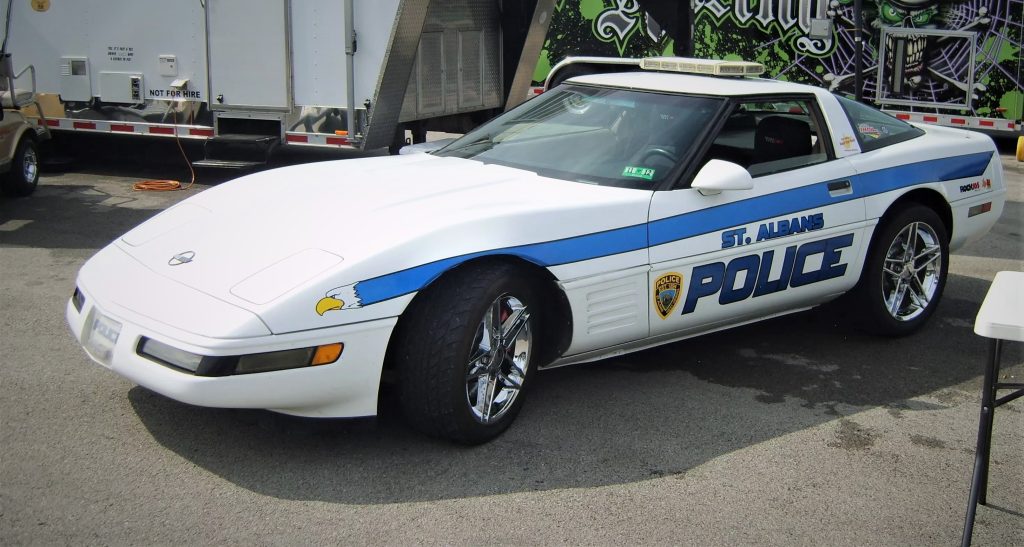
From land speed records and IMSA victories all the way to “The Big Lebowski” and Test Drive on DOS, the C4 has made lasting marks on both the gearhead world and pop culture in general.
(And is it possible to picture a C4 in the twilight and not hear delightful synthwave goodness in your head?)
With that, we’ll leave you with what is, quite possibly, the best TV commercial of all time—yes, surpassing even the epic Atari Pole Position spot.
Check it out below.
You’ve never seen. Anything. Like this before.

I own a 1987 C4 Corvette and I love my car me and my Red corvette
How come i never read about the optispark design problem with corvettes. Mine has been in the shop for six months. Because of never ending problems with the optispark and ECM (electronic control module),always failing.
General Motors should of informed Corvette buyers.
Yeah, the Optispark has some well-documented issues. But our pal Jeff Smith offers some insight in this tech column, it may be worth the read: Advice for Replacing or Upgrading an Opti-Spark Ignition on a GM LT1 Engine
I own a 96 collectors Corvette and information on it are hard to find so are service Manuel’s but it’s a blast to drive when it’s not running Hot